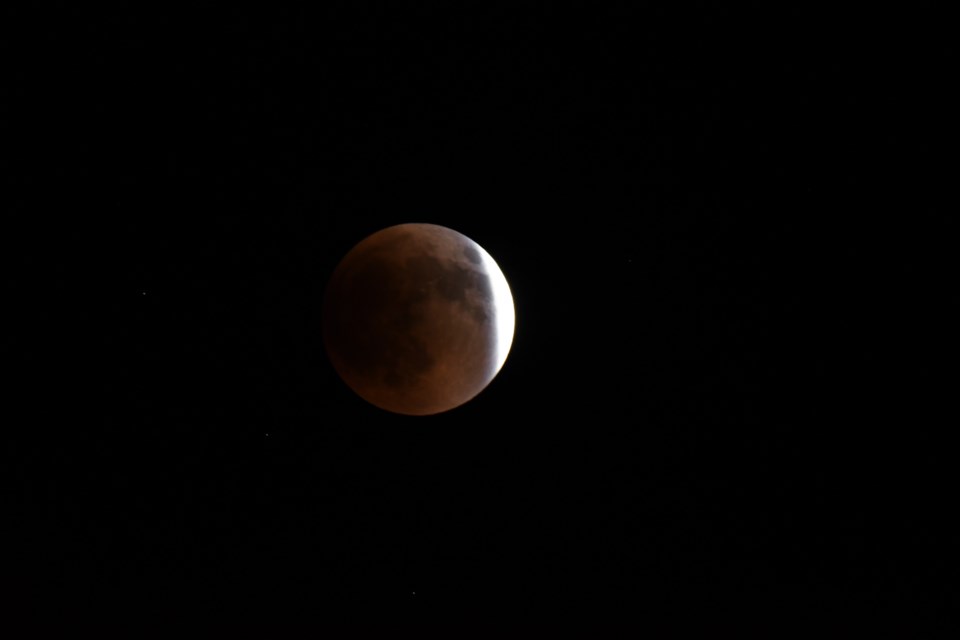BayToday reader Cameron Sanders was kind enough to photograph the event for us using a Nikon D500 with a 200-500 f5.6 lens.
According to Gary Boyle, the "Back Yard Astronomer" early civilizations called it the “Super Flower Blood Moon”, as our natural satellite would sometimes take on a reddish hue during such cosmic events. Superstition portrayed eclipses as portents of doom and gloom.
The colour variation from one eclipse to another depends on the transparency or thickness of our atmosphere. The coloured lunar surface is the result of sunlight refracting as it passes through our atmosphere, much like as when we see a red sunset.
"The ancient Inca people would shake their spears and shout to scare off the jaguar they thought was eating the moon," says Boyle. "Of course, it always worked. Other times, the moon would turn a copper or burnt-orange colour."
Super is in the name because the moon was at its closest approach to us through its orbit.
The Flower part is because it’s happening in April and May, when we’re starting to get blooms.
We don't have an eclipse every month, because the moon has a slight incline on its axis as it orbits our planet. However, there are a few special moments throughout the year when the sun, Earth, and moon line up.
Boyle has an interesting story about
Because eclipses were terrifying events to some cultures in the past, Christopher Columbus was able to use a prediction from an almanac to save his shipwrecked crew from starvation.
Months before the 1504 total eclipse, his crew was stranded off the coast of Jamaica. They were welcomed by the Arawaks and given food and shelter.
"Over time, half the crew mutinied and began stealing and even murdering some of the friendly nearby Indigenous inhabitants.
Things became dire when the local chief finally held back food, resulting in the onset of starvation. Columbus knew the predicted eclipse would occur in a few days and used it to his advantage. He fooled the chief into believing he had the power to cause the moon to turn a fearful blood-red tint.
On the night of February 29, the moon rose while entering Earth’s shadow. This became of great concern to the villagers, who provided food to the crew once again. Columbus waited in his tent until the right moment, as per the prediction.
A few minutes before the end of totality, he announced that his gods had pardoned them. As he uttered those words, the moon begins to pull out of the shadow and appear normal. A rescue mission found Columbus and his crew four months later."



